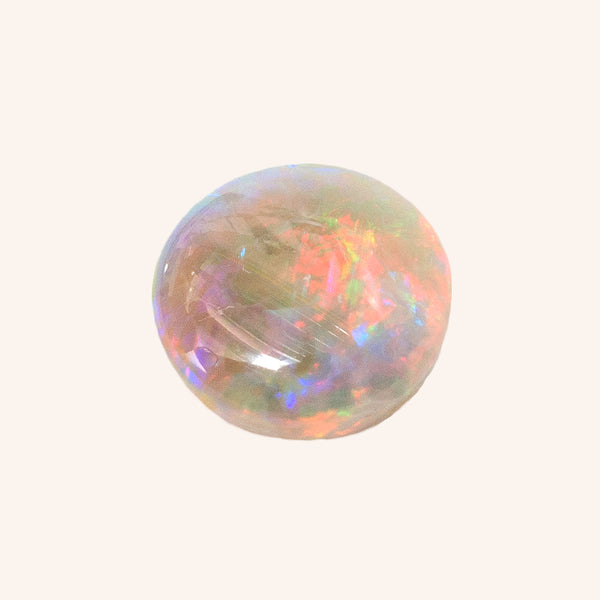

Mineral: Hydrated Silica
Colour: Many Colours
Moh's Hardness: 5 - 6.5
Birthstone: October
Anniversary: 14th
Like looking into the cosmos, an opal can display dazzling arrays of colour and pattern that make it like no other gem. Comprised of microscopic stacked spheres of silica, light is diffracted into a vibrant array of colours, meaning no two opals are alike. Australia is the world’s largest producer of high quality opal with 97% of the supply coming from areas like Coober Pedy (white opal) and Lightning Ridge (black opal).
History
It is believed that opal formation began during the early Cretaceous period when dinosaurs walked the earth, over 100 million years ago. Opal is comprised of hydrated silica and can have up to 20% water content. Australian opal is considered the finest as it is the oldest and most stable form of opal, formed some 100 to 97 million years ago when the centre of Australia was covered by an inland sea.
The word 'opal' was possibly derived from the Sanskrit word 'upala' which means precious stone. It was highly valued by the ancient Romans who regarded it as a symbol of hope and purity, and wore it as a talisman for good luck. The Greeks believed opal had the capacity to bestow powers of foresight and prophecy upon its owner, while the Arabs thought the opal had been carried to earth by a bolt of lightning.
Care
Opals are suitable for jewellery but do need to be treated with care, as they are vulnerable to scratch and chip when knocked. Opal is generally stable, but heat from intense light can cause fracture lines called ‘crazing’. High heat or sudden temperature changes can also cause opal to fracture. Opal is attacked by hydrofluoric acid and caustic alkaline solutions.
Clean your opals with a soft cloth and warm soapy water if necessary. Avoid any chemicals and prolonged exposure to water, such as showering, and if you are gentle, they will reward you (and those who may inherit your jewels) with many years of enjoyment.





























